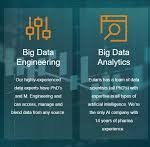Introduction to PHI and PII

Data privacy has become a cornerstone of trust in our digital world. Protected Health Information (PHI) and Personally Identifiable Information (PII) are two critical types of data that organizations must safeguard. Understanding their differences, overlaps, and the implications of breaches is vital for businesses and individuals alike.
- Definition of PHI (Protected Health Information): PHI refers to any health-related data that can be linked to a specific individual. It includes medical records, health insurance details, and even discussions between doctors and patients.
- Definition of PII (Personally Identifiable Information): PII includes data that can be used to identify a person, such as names, addresses, phone numbers, email addresses, and Social Security numbers.
- Importance of Data Privacy in the Digital Age: With the rise of cybercrime, protecting PHI and PII is essential for maintaining trust and preventing financial and emotional harm.
- Key Differences Between PHI and PII: While PHI is specific to health data, PII is a broader category encompassing all forms of identifiable personal data.
Understanding PHI (Protected Health Information)
PHI is a subset of sensitive information protected under regulations like the Health Insurance Portability and Accountability Act (HIPAA).
- What is PHI?: PHI refers to any information related to an individual’s health status, healthcare provision, or healthcare payment.
- Examples of PHI: Medical test results, hospital records, insurance claims.
- Legal Frameworks Protecting PHI (HIPAA, HITECH Act): HIPAA establishes guidelines for healthcare providers to protect PHI.
- Real-Life Cases of PHI Breaches: Data breaches in hospitals or insurance companies have led to significant financial losses and reputational damage.
Understanding PII (Personally Identifiable Information)
PII is more universal and can be found in multiple industries, including finance, retail, and technology.
- What is PII?: PII includes data like full names, national ID numbers, passport details, and online login credentials.
- Examples of PII: Names, email addresses, phone numbers, and IP addresses.
- Legal Frameworks Protecting PII (GDPR, CCPA): Laws like GDPR in Europe and CCPA in California impose strict penalties for mishandling PII.
- Consequences of PII Breaches: Financial fraud, identity theft, and phishing attacks.
The Overlapping Nature of PHI and PII
In many scenarios, PHI and PII overlap. For example, a medical report containing a patient’s name and Social Security number is both PHI and PII.
- How PHI and PII Often Intersect: Both types of data are often stored together in healthcare databases.
- Case Studies Demonstrating Overlaps: Real-world examples of healthcare data breaches show the intertwined nature of PHI and PII.
- Risks Associated with Mismanagement: Improper handling of overlapping data can lead to multifaceted security breaches.
Why Protecting PHI and PII is Crucial
Failing to secure PHI and PII can have severe consequences.
- Risks of Data Breaches: Loss of customer trust, financial penalties, and potential lawsuits.
- Financial Implications: Organizations face hefty fines under HIPAA, GDPR, and CCPA.
- Impact on Reputation: Data breaches can cause irreparable damage to a brand’s image.
- Long-Term Consequences for Individuals: Victims of identity theft often deal with long-term financial and emotional distress.
Best Practices for Protecting PHI and PII
Ensuring data privacy requires a multi-layered approach.
- Data Encryption: Encrypting sensitive data makes it harder for unauthorized parties to access it.
- Access Controls and Authentication: Implementing strict access controls reduces unauthorized access.
- Regular Audits and Monitoring: Routine checks ensure compliance with data privacy regulations.
- Employee Training and Awareness: Educating staff on data privacy best practices is essential.
Role of Technology in Safeguarding PHI and PII
Modern technology plays a critical role in data protection.
- Cybersecurity Tools: Firewalls, antivirus software, and intrusion detection systems.
- AI and Machine Learning in Data Protection: Predictive algorithms identify vulnerabilities.
- Secure Cloud Storage Solutions: Encrypted cloud systems safeguard data against breaches.
- Blockchain for Data Security: Blockchain offers transparent and tamper-proof data storage.
Legal Consequences of PHI and PII Breaches
Non-compliance with data protection laws results in serious penalties.
- HIPAA Violation Penalties: Fines ranging from $100 to $50,000 per violation.
- GDPR Fines: Penalties of up to €20 million or 4% of global annual revenue.
- Real-World Legal Cases: Examples of companies facing fines and legal battles over data breaches.
- Steps to Handle a Breach Legally: Reporting protocols, damage control measures, and compliance checks.
Conclusion
In an era dominated by digital transformation, protecting PHI and PII is more critical than ever. Organizations must adopt robust security measures, remain compliant with legal regulations, and foster a culture of data privacy awareness.



Pingback: Unlocking the Mystery: Why PHI and PII Matter in Protecting Your Data – GlotarLife